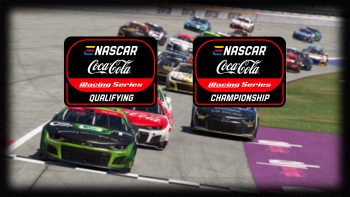
IndyCar Reality Check: The Milwaukee Mile
July 17th, 2015 by Jaime Baker

iRacer Simon Pagenaud tackles the fabled Milwaukee Mile for Team Penske. (IndyCar/Chris Jones image)
Built in 1903 and located on the Wisconsin State Fairgrounds, The Milwaukee Mile is the oldest motor speedway in the United States and is home to the second shortest track on the Verizon IndyCar Series schedule. At 1.015mi in length and only 9.25° of banking in the corners, Milwaukee is one of the most difficult ovals on the Verizon IndyCar Series schedule. While making nothing but left turns is easy, building setups for Milwaukee is challenging due to both the track layout and weather conditions.
“This place is like a skid pad.” – Ben Bretzman, Team Penske race engineer
Ben Bretzman, race engineer for Simon Pagenaud’s #22 Team Penske car, described Milwaukee as being “…really tough, this place is like a skid pad. Here we have a lot of tire degradation and trying to keep the tires on the car as long as you can right over a stint is the hard part because you lose a second or two over a stint here.” Bretzman continued, “…getting downforce right is important, like having an efficient car so most of the time you’re running close to max downforce here just because of how far the tires fall off.”
With tire degradation being so high at Milwaukee, iRacers will need to build their setups based on which end of the car has its tires fall off first, not to mention where on the track and traffic you are. Typically you will want to build a little bit of understeer into your setup to help save the rear tires throughout a stint because once the Dallara DW12 starts getting loose in the corners, there’s nothing you can really do about it unless you pit. While normally at Milwaukee the rear tires are the first to fall off, if you’re running in traffic the turbulence will wear away your front tires first. Therefore it’s important at Milwaukee to have a couple different race setups depending on where you’re starting on the grid. Cars near the front of the grid will want to employ a strategy of slight understeer to save the rear tires while cars near the back will want a setup leaning slightly towards oversteer to minimize the effects of turbulence and to save the front tires.
The other major factor at Milwaukee is the weather, specifically the wind. Bretzman explained, “If you have a west wind, you get air on the nose in Turn 1. So you’ll be free there and the opposite is true in Turn 3.”
As with other ovals, it’s important to keep-up on your in-car tools in order to deal with not only changes in the car over a stint, but track conditions. Unlike Indianapolis and other longer ovals, iRacers will need to be quick to decide what in-car adjustments to make since – at just a mile in length – you don’t have a whole lot of time on the straightaways to think and decide. The old adage “Practice! Practice! Practice!” is especially relevant here at The Milwaukee Mile.















































